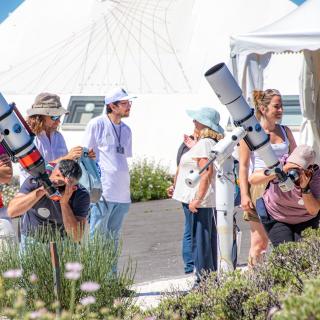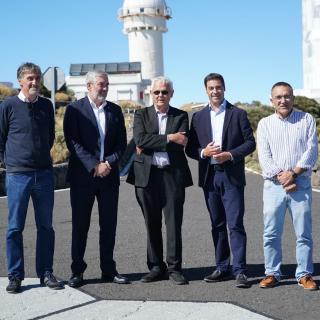It may interest you
-
 El Museo de la Ciencia y el Cosmos , del Organismo Autónomo de Museos y Centros del Cabildo de Tenerife, acogerá el próximo jueves 23 de octubre a las 16:30 horas una nueva cita del ciclo de divulgación científica “Del cielo a la tesis”, organizado en colaboración con la Universidad de La Laguna (ULL) y el Instituto de Astrofísica de Canarias (IAC). Este ciclo, impulsado por estudiantes de doctorado del IAC, tiene como objetivo acercar a la ciudadanía los temas más actuales de la investigación astrofísica contados en primera persona por quienes los desarrollan. Cada sesión, de carácterAdvertised on
El Museo de la Ciencia y el Cosmos , del Organismo Autónomo de Museos y Centros del Cabildo de Tenerife, acogerá el próximo jueves 23 de octubre a las 16:30 horas una nueva cita del ciclo de divulgación científica “Del cielo a la tesis”, organizado en colaboración con la Universidad de La Laguna (ULL) y el Instituto de Astrofísica de Canarias (IAC). Este ciclo, impulsado por estudiantes de doctorado del IAC, tiene como objetivo acercar a la ciudadanía los temas más actuales de la investigación astrofísica contados en primera persona por quienes los desarrollan. Cada sesión, de carácterAdvertised on -
 El Observatorio del Teide recibe este fin de semana a cerca de 1.000 visitantes en sus tradicionales Jornadas de Puertas Abiertas, organizadas por el Instituto de Astrofísica de Canarias (IAC) con motivo del solsticio de verano. Esta iniciativa, ya consolidada en el calendario divulgativo del IAC, ofrece a la ciudadanía la oportunidad de acercarse a la ciencia y a las infraestructuras científicas de Canarias de forma directa y cercana. La actividad está coordinada conjuntamente por el propio Observatorio y por la Unidad de Comunicación y Cultura Científica (UC3) del IAC, en el marco de lasAdvertised on
El Observatorio del Teide recibe este fin de semana a cerca de 1.000 visitantes en sus tradicionales Jornadas de Puertas Abiertas, organizadas por el Instituto de Astrofísica de Canarias (IAC) con motivo del solsticio de verano. Esta iniciativa, ya consolidada en el calendario divulgativo del IAC, ofrece a la ciudadanía la oportunidad de acercarse a la ciencia y a las infraestructuras científicas de Canarias de forma directa y cercana. La actividad está coordinada conjuntamente por el propio Observatorio y por la Unidad de Comunicación y Cultura Científica (UC3) del IAC, en el marco de lasAdvertised on -
 El Lehendakari del Gobierno Vasco, Imanol Pradales Gil, y el presidente del Gobierno de Canarias, Fernando Clavijo Batle, han visitado las instalaciones del Observatorio del Teide del Instituto de Astrofísica de Canarias (IAC) donde han sido recibidos por el director del centro, Valentín Martínez Pillet que ha estado acompañado por personal científico y técnico. Esta visita subraya el interés y la apuesta compartida por ambos gobiernos por la excelencia científica y la colaboración en proyectos de alta tecnología como los que abandera el IAC desde Canarias. Con dos de los observatorios másAdvertised on
El Lehendakari del Gobierno Vasco, Imanol Pradales Gil, y el presidente del Gobierno de Canarias, Fernando Clavijo Batle, han visitado las instalaciones del Observatorio del Teide del Instituto de Astrofísica de Canarias (IAC) donde han sido recibidos por el director del centro, Valentín Martínez Pillet que ha estado acompañado por personal científico y técnico. Esta visita subraya el interés y la apuesta compartida por ambos gobiernos por la excelencia científica y la colaboración en proyectos de alta tecnología como los que abandera el IAC desde Canarias. Con dos de los observatorios másAdvertised on
